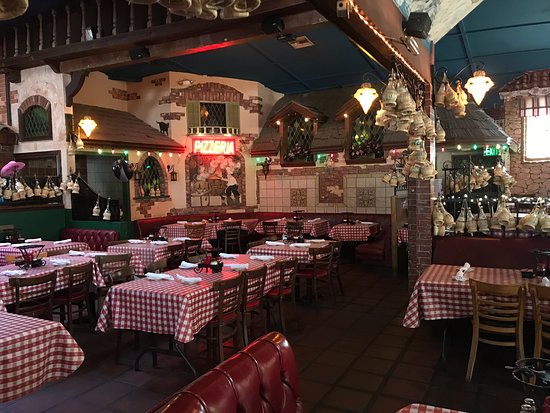I would like to preface this post with the assurance that we are all safe and unharmed.
This evening, TCM Classic Film Festival attendees received an alert on their apps that a shelter-in-place order had been issued for our area of Hollywood Blvd. I was waiting in the ticket line for Ball of Fire, set up outside, when I was quickly ushered into the building by festival staff. Word spread quickly that there had been a shooting. We now know that it was a fight between two individuals at the corner of Hollywood and Highland, which ended when an onlooker tried to intervene, and was shot. The victim was transported to the hospital and reports say that he is conscious and responsive.
I wanted to address this incident, because in the past I have sung the praises of the TCM staff and their handling of emergencies. Whenever an urgent situation arises during the festival (and there have been several), they are professional, efficient, and quick on their feet. The response of the staff to this shelter-in-place announcement was exemplary as usual. They managed to get everyone inside quickly, deftly reorganized the line system to get everyone their numbers, and answered questions as they arose. When the order was lifted, they got everyone back to normal without any noticeable disruption.
The staff deserve huge amounts of credit for what they do. Whatever our frustrations with line policy, these staffers are magnificent under pressure. I told a worker today how impressed I was, and asked if they had formal training in emergency response. She responded that they had some, but most of what they do is passed down from the wisdom of previous workers. The staff should be acknowledged for what they do, far more than they are. I hope, after this incident, there will be words of appreciation for them at tomorrow’s screenings.
The rest of the day was wonderful. I spent the morning at Larry Edmunds Bookshop, where copies of Captain of Her Soul nearly sold out. The lovely Simone from Teenage Golden Age also dropped in to say hello, as she is at the festival this weekend. Teenage Golden Age is a podcast where Simone and her friend, Eliana, talk about classic Hollywood from the teenage perspective. They interviewed me about Marion Davies a few months ago, and the episode aired last week. If you haven’t listened to it, I highly recommend subscribing. These are fascinating kids, who represent the future of classic movies.
Following that, I walked down a block to Miceli’s, the oldest Italian restaurant in Los Angeles, to have lunch with a friend. I always eat at Miceli’s at least once during the festival, because it’s hearty, tasty, and very convenient. It is also the very definition of a small local business–it has been owned by the same family since its founding in 1949. My friend was very impressed with its ambiance and the collection of chianti bottles that hang from the walls.
Due to these obligations, my first movie of the day wasn’t until 3:00. It was an old favorite, The Strawberry Blonde (1941). I have seen the film at least a dozen times on my television, but seeing it on the big screen is a whole different experience. I often remember the first time I saw The Umbrellas of Cherbourg on the big screen, after having been a fan of that beautiful film for years. The sheer vivacity of the colors and luminous closeups gave me the sense that I had never seen the movie at all before. The Strawberry Blonde is similarly made for the theater. The beauty of the stars is brought out by the size of the screen, but also, I find, highlights the skill of the actors and the deep nuances of the characters. It is a light story on its face, but these roles are three-dimensional and complex. I found Rita Hayworth’s character much more sympathetic in this viewing than I did in previous viewings. Her unhappiness in her marriage is palpable, and in certain scenes I really felt for her.
But I must say that the best part of The Strawberry Blonde was the audience. There was such enthusiasm–delighted laughter and joyous applause–all at the perfect moments. The sing-a-long at the end, built into the ending credits, was the icing on the cake. The perfect way to end a showing.
My viewing of Penny Serenade (1941) was, unfortunately, cut short. The pre-film discussion between Ben Mankiewicz, Alexander Payne, and George Stevens, Jr. lasted for more than half an hour, and the 6:00 film actually started around 6:35. I was concerned about getting into Ball of Fire (in Theater 4, the smallest one in the multiplex), and about dinner. I left about an hour in.
Penny Serenade is a film you never forget. It flows so beautifully and naturally, presenting a raw, true-to-life story about the life of a couple and their desire to have a child. Irene Dunne and Cary Grant are alternately heartbreaking, joyful, funny, and despairing in their portrayals, and it showcases the versatility of both of them. Neither of them ever won a competitive Oscar, which is a shame on the Academy highlighted by their performances in Penny Serenade.
I got a good ticket number for Ball of Fire (I realize now, as I write, that all my movie choices today were from 1941), and after the shelter-in-place incident was cleared, we had a delightful screening with another enthusiastic audience–tempered by the fact that the screening started after 9 PM. Before the film, presenter Dana Delany asked how many people had seen Ball of Fire before. Almost every hand went up. So many of us love to see our old favorites at the festival, alongside others who love them like we do.
Tomorrow is another packed day with some schedule conflicts! I don’t know where I will be tomorrow at 6:00, but I’ll let you know what happens.
See you then!

































































_03.jpg)

